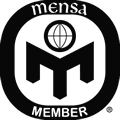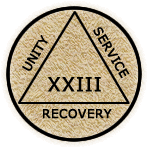|
Selected portions of the
BloostonLaw Telecom Update,
and/or the
BloostonLaw Private Users Update
— newsletters from the Law Offices of
Blooston, Mordkofsky, Dickens, Duffy & Prendergast, LLP
are reproduced in this section with the firm's permission.

|
BloostonLaw Telecom Update
|
Vol. 17, No. 5
|
February 5, 2014
|
FCC Issues Enforcement Advisory Indicating that CPNI Filings are Due March 1
The FCC has issued an Enforcement Advisory regarding this year's CPNI Certifications, announcing that the Certifications "are due March 1, 2014." Because March 1 is a Saturday, by rule the filing deadline moves to the following business day, i.e., Monday March 3. We suspect that the Bureau simply dusted off and reissued last year's Advisory, without noting that the due date falls on a weekend. However, unless and until the Enforcement Bureau issues a correction, carriers will want to file by Friday, February 28th out of an abundance of caution (which is a good idea anyway, since the FCC's filing system often slows to a crawl on the actual deadline because of the volume of traffic). Because of the risk of an unsuccessful filing attempt on the last day, it is prudent for clients not to wait until the deadline to file CPNI certifications that have frequency been subject to substantial forfeitures for late filing.
Please note, that BloostonLaw will respond to any requests concerning the filing of the CPNI report within 24 hours of receipt. If you do not receive a response within this timeframe, please contact the office to ensure that your request has been received.
Headlines

FCC Initiates Rural Next Generation Network Experiments for Price Cap, Rate-of-Return Areas
Of the several IP Transition experiments adopted by the FCC last week, the one likely to have the most interest for, and impact upon, our RLEC, CLEC and wireless clients is the program of Next Generation Network Experiments in Rural America (WC Docket No. 10-90). The stated purpose of these experiments is to test how "tailored economic incentives" can advance the deployment of wireline and wireless IP networks in rural, high-cost areas. The FCC is looking to see what types of viable business models (including models involving one-time or continuing USF support) can support the deployment of fiber or other next generation wired technology in rural areas. The FCC is also exploring the conditions under which consumers will prefer next generation wireless services over wireline alternatives.
The rural experiment presents opportunities for clients to obtain CAF funding to deploy broadband in nearby unserved or underserved price cap areas, and/or in unserved or underserved portions of their own service areas. Particularly since RLECs and CLECs already have their switching/routing and middle mile arrangements in place, they may be able to propose interesting experiments to expand their broadband networks in a cost-effective manner while improving the economies of scale in their existing broadband areas.
If you are interested in exploring how your company can participate in this process, please contact us as soon as possible. Initial Expressions of Interest are due March 7, 2014. Formal proposals and grants are expected during 2014, but the scope and amounts of potential grants are yet to be determined.
The FCC has indicated that these experiments will "focus" upon the deployment of last mile broadband networks (and not encompass middle mile projects) in rural areas that lack Internet access service that delivers 3 Megabits per second downstream and 768 kilobits per second upstream. Note that the "focus" wording means that the FCC has left the door open for grant-supported experiments in areas with 3/768 or better service, although it appears most experiments will be in areas lacking at least 3/768 service. In price cap areas, the experimental areas will be one or more Census tracts, whereas in rate-of-return areas, the FCC is proposing in a further rulemaking to use Census blocks.
The FCC is proposing to fund these experiments with a portion of the current unallocated $230 million balance in the Connect America Fund (CAF). In its further rulemaking, it has asked whether $50 million, $100 million, or some other amount should be allocated for the rural experiments. It has also asked whether the ultimate aggregate amount should be allocated expressly between price cap and rate-of-return areas, and/or between grants of one-time support and grants of recurring support. The FCC has indicated that the amount of experimental funding granted for a particular area will be limited to the amount calculated by the model being developed for the price cap carriers in the CAF Phase II proceeding. While recognizing that the Rural Associations have indicated that adjustments need to be made to that model before it can be used by rate-of-return carriers, the FCC has asked in the further rulemaking how the model might be used in the selection or funding of areas in the rate-of-return portion of the experiment.
The FCC has invited a wide range of entities and consortia (including state and regional authorities, research and education networks, municipalities, Tribal governments, cable operators, CLECs, ILECs, fixed and mobile wireless providers, wireless Internet service providers and electric utilities) to participate in these experiments. As reported last week, the FCC is particularly interested in whether electric utilities and others can and will deploy rural broadband networks without requiring continuing universal service support. Where an entity proposes a funded experiment for an area that already receives at least 3/768 service, the FCC has determined that the existing service provider can challenge the validity of the experiment, but only after the FCC has granted the formal proposal for the experiment.
The FCC has adopted a
March 7, 2014
date for the filing of non-binding Expressions of Interest (EOIs) in conducting experiments in price cap areas. The status and legal consequences of these EOIs is not clear because they appear: (1) not to require filing entities to proceed with the submission of formal proposals for their experiments; (2) not to be required as a precondition for the filing of such formal proposals; and (3) to be able to be filed after March 7 "on a rolling basis." The FCC is proposing to use similar EOIs in the rate-of-return portion of the experiments, although it appears that the FCC will set the applicable "due date" in the further rulemaking. EOIs are expected to identify the entity, service area, technology, service offerings, pricing, supporting governmental entities, funding type (one-time or continuing), and estimated funding requested.
At a currently unspecified time after the EOI filings, the FCC will require the filing of formal proposals for experiments. These second stage filings have not yet been described fully by the FCC. They will likely contain detailed and binding elaborations of the information provided in the EOIs, plus additional information relevant to the FCC's selection process. In the further rulemaking, the FCC is proposing and seeking comment upon selection processes and factors, including cost-effectiveness, one-time only funding, scalability and ability to meet increasing broadband speed requirements, leveraging of state and Tribal government funding, service to Tribal lands, and service to small businesses and community anchor institutions.
The FCC asserts that the rural experiments will not delay its implementation of the CAF Phase II mechanism for price cap carriers, or its ongoing "reform" of the rate-of-return USF mechanisms. However, initial reading of the IP experiments order indicates that there are substantial questions regarding the relationship of the rural experiments to developing unsubsidized competitor policies, as well as to whether the experiments interfere with the rights of refusal granted to price cap carriers and preclude the grant of similar options to rate-of-return carriers. Nonetheless, barring complications from judicial or legislative efforts, we expect the FCC to proceed with and implement its rural IP experiments during 2014 and early 2015.
FCC Adopts a Variety of Other TDM-to-IP Transition Experiments
In addition to the rural Next Generation Network Experiments, the FCC has adopted programs for (1) voluntary service-based experiments; (2) research on impact of the IP technologies upon persons with disabilities; and (3) development of a numbering testbed to study number assignment and database issues in an all-IP world. The FCC also began an ongoing data initiative to improve its collection of information regarding the evolution of technologies.
Voluntary Service-Based Experiments
The voluntary service-based experiments are the FCC's response to AT&T's November 2012 petition seeking "trials" in connection with the TDM-to-IP transition. Proposals for the initial set of experiments are due February 20, 2014; comments are due March 21 and replies March 31; and the FCC expects to approve or reject the various individual proposals within the initial set by the end of May 2014. The FCC will accept additional proposals after February 20, but will cease considering such proposals one year after it acts upon the initial set of proposals.
Proposals for service-based experiments must provide "detailed" information concerning: (1) the purpose of the experiment; (2) the metrics for measuring its success; (3) the experimental scope (e.g., whether it involves geography and/or service offerings); (4) the technical parameters, and how they will affect customers, other service providers and/or product and service offerings; (5) the timelines for the experiment; and (6) what temporary regulatory relief is required to conduct the experiment. Experiments will be required to protect public safety, emergency preparedness and response, and national security functions; maintain universal access, including for persons with disabilities, elderly, low-income households, Tribal land residents, and others likely to be affected differently than the general population; retain wholesale service and interconnection arrangements used by competitors and other service providers; and protect customer privacy, truth-in-billing, slamming, cramming and local number portability protections. In addition, experimenting carriers will have to provide clear, timely and sufficient notices to customers, and furnish simple and easy-to-use means for customers to provide their feedback regarding experiments. Finally, the experimenting entities will have to specify the data they will collect from both affected customers and a control group, and provide such data to the FCC.
BloostonLaw believes that only AT&T and perhaps several other proponents of "trials" are far enough along in developing proposals to be able to file them by February 20. Interested clients would be prudent to see what types of experiments and proposals are granted within the initial set before preparing their own proposals. Whereas it would be very useful to have RLEC and CLEC and small wireless provider data in the FCC record when it makes various future determinations regarding the IP transition, we realize that these experiments require substantial effort and expense for planning, execution, analysis and reporting and that such unfunded projects are a major burden in a time of increasing broadband investment needs and decreasing revenue streams.
Research for Persons with Disabilities
The FCC permitted its Managing Director to enter into research partnerships with federal agencies other than the National Science Foundation, and adopted an initial research budget of $3 million. It authorized the funding of research and development projects that: (a) explore the impact of IP-based technologies and services on persons with disabilities; (b) ensure that Telecommunications Relay Service (TRS) is functionally equivalent to voice telephone services; and (c) improve the efficiency and availability of TRS.
Research and Development of Numbering Testbed
The FCC is seeking to develop a numbering testbed to enable research into numbering issues in an all-IP network unencumbered by the constraints of the existing public network. This initiative will consist of: (1) a small, non-production system for prototyping; and (2) one or more workshops to allow a cross-industry and collaborative group of technical experts (with particular emphasis upon software engineers) to sketch and prototype a system for managing numbering resources and obtaining information about such resources.
Ongoing Data Initiative
The FCC has also proposed an Ongoing Data Initiative that goes beyond the various experiments to gather a record to support its determinations regarding various IP transition issues.
First, the FCC seeks to improve its consumer feedback data by: (a) enhancing its consumer compliant intake, analysis and reporting and by making it easier to search its consumer complaints database; (b) working cooperatively with states, localities and Tribal governments to gather and share consumer complaint and inquiry data; and (c) making it easier to access and use the consumer data the FCC collects, without adversely impacting privacy interests.
Second, the FCC is looking to improve the ways that it collects and makes available information on Next Generation 911 deployment from public safety agencies, carriers and vendors. It wants to use such data to develop and share lessons learned and best practices without impairing confidentiality concerns.
Third, the FCC wants more generalized data to help it determine where various areas are along the TDM-to-IP transition path; how core values (public safety, universal access, competition, and consumer protection) are being affected; what matters most to consumers and industry participants; and what trade-off are most acceptable.
Finally, the FCC wants to develop partnerships with public and private stakeholders to gather and analyze data on the needs, implications and impacts of the IP transition upon health care providers and their patients.
FCC Adopts Policy Statement and Proposes Rules for Text-to-911 Service
In order to improve access to 911 services to persons who aren't able to reach emergency call centers by a voice call, the FCC last week adopted a Policy Statement and NPRM (
FCC 14-6
) that seeks to make text-to-911 services generally available by the end of the year in areas where 911 call centers are equipped to receive texts. Comments on the NPRM will be due 30 days after publication in the Federal Register, and reply comments will be due another 30 days after the comments.
The Commission's action comes in the wake of voluntary commitments by the nation's four largest wireless carriers to make text-to-911 services available to their customers by May 15, 2014.
According to the Policy Statement, every CMRS carrier and every provider that enables a consumer to send text messages using numbers from the North American Numbering Plan should support text-to-911 capabilities. Therefore, the FCC intends to pursue a technologically-neutral approach that provides platform-independent norms for all stakeholders, based on high-level functional standards set by the relevant stakeholders in industry and the public safety community. The FCC encouraged stakeholders to develop implementation details on a consensual basis in a manner that enables fact-based monitoring of progress by the relevant industry bodies, 911 and public safety authorities, and regulatory agencies, and encouraged CMRS and interconnected text providers that are not parties to the Carrier-NENA-APCO Agreement to work with the public safety community to develop similar commitments to support text-to-911 in a timely manner.
The NPRM seeks further comment on certain aspects of the technical provision of text-to-911 by text providers, with particular emphasis on interconnected text providers, including: the timeframe for implementation of text-to-911 capability; the timeframe for interconnected "over-the-top" text providers; over-the-top text-to-911 message delivery models; costs; relay services; PSAP implementation; roaming; liability protection; waivers; and others.
FCC Issues Report on VoIP Numbering Trials, Seeks Comment
On January 31, the Wireline Competition Bureau (WCB) issued a Report on the results of the six-month technical trial in which interconnected VoIP providers were permitted to reserve telephone numbers for their end users directly from the numbering administrators rather than indirectly through a separate telecommunications carrier. The WCB concluded that, based upon the results of the trial, it is technically feasible for interconnected VoIP providers to obtain telephone numbers directly from the numbering administrators.
Comments on the Report are due March 3.
According to the Report, the trials did highlight some issues about interconnection and porting, but the WCB found that those issues related to disputes about what a carrier's obligation is to interconnect with or port to a VoIP provider, rather than implicating technical concerns. Apparently, Vonage, Level 3, SmartEdgeNet, and Millicorp reported being unable to reach agreement with CenturyLink for traffic exchange. CenturyLink was requiring VoIP trial participants to interconnect via dedicated trunks, and the trial participants objected to this requirement because it added unnecessary costs to the exchange of traffic and disincentivized interconnection in IP format. The WCB found that these issues could be addressed and clarified by the FCC if and when it implemented official direct access rules for VoIP providers, as trial participants were not permitted to obtain direct access to additional numbers until that time.
FCC Extends Reply Comment Date for Public Knowledge Petition on CPNI
On January 30, 2014, the Wireline Competition Bureau (WCB) extended the time to file reply comments on the December 11, 2013
Petition for a Declaratory Ruling
filed by Public Knowledge and others. The Petition asked the FCC to rule that under section 222, non-aggregate call records that have been purged of personal identifiers but leave customers' individual characteristics intact are protected as individually identifiable customer proprietary network information, and that telecommunications providers are prohibited from selling or sharing such records with third parties without customers' consent.
The reply comment deadline has been extended to March 3, 2014.
According to the Petition, non-aggregated call records that have been purged of personal identifiers are nevertheless individually identifiable and are therefore be protected under section 222 of the Communications Act. The Petition further states that AT&T already sells individually identifiable call records without customers' consent, and AT&T, Verizon, Sprint, and T-Mobile all reserve the right to share individually identifiable CPNI with third parties without customers' consent. Unsurprisingly, Verizon, AT&T, CenturyLink, Sprint, and CTIA have filed comments urging the FCC to deny the Petition. The primary argument advanced by these entities (though they have filed separately) is that the Petitioners' interpretation of the statute is in conflict with its plain meaning.
Carriers interested in filing reply comments in this proceeding should contact the firm as soon as possible.
FCC Updates List of Eligible Areas for Tribal Mobility Fund Phase I Support
The Wireless Telecommunications and Wireline Competition Bureaus have announced some last minute changes to the list of eligible areas for Tribal Mobility Fund Phase I Auction ("Auction 902"). Auction 902 is a reverse auction that will award up to $50 million in one-time support to extend mobile broadband service to unserved tribal lands. The auction is currently scheduled for Tuesday, February 25, 2014.
The updated list removes certain census blocks in North Dakota, South Dakota and Alaska from eligibility for bidding in Auction 902 as a result of support that was authorized in the initial Mobility Fund Auction ("Auction 901"). Also, for those blocks on which Auction 901 winning bidders have defaulted, the Bureaus have removed asterisks in the list that previously identified the relevant census blocks as having received winning bids in Auction 901, and these areas will be eligible for bidding in Auction 902.
The Bureaus had said that an updated list of bidding areas and geographic information system (GIS) data for the eligible areas will soon be available as a downloadable shapefile on the Auction 902 website at
http://wireless.fcc.gov/auctions/902/
.
Bidding areas that have been removed or modified since the prior list was released on September 27, 2013, include portions of the Bethel Census Area in Alaska corresponding to Akiak and Kwethluk tribal lands, and portions of Sioux County, North Dakota corresponding to Standing Rock tribal lands. Bidding areas that have been modified to remove census blocks no longer eligible for Tribal Mobility Fund Phase I support include eight (8) bidding areas in the Bethel Census Area; one bidding area in Sioux County, North Dakota corresponding to Standing Rock tribal lands, and two bidding areas in Corson County, South Dakota that also correspond to Standing Rock tribal lands. Specific bidding areas are identified in Attachment B of the Bureaus' Public Notice
DA 14-109
.
Auction 901 was originally scheduled to take place in October 24th of last year, but was rescheduled for December 19th in order to provide potential bidders additional time to review the first updated list of eligible census blocks. The revised December 19th auction date was extended until February 25th as a result of disruption to Commission operations due to the federal government shutdown.
FCC Solidifies 600 MHz Incentive Auction Timeline
At the FCC Open Meeting on January 30th, the Incentive Auction Task Force delivered a
presentation
with a projected timeline for the 600 MHz Broadcast Incentive Auction, which is scheduled to begin in mid-2015.
The broadcast television spectrum incentive auction will be the first such auction ever conducted and, accordingly, requires a new and unique design. The incentive auction itself will be comprised of two separate auctions — a reverse auction and a forward auction. The lynchpin joining the reverse and the forward auctions is the "repacking" process.

Among the more important milestones, the FCC staff is expected to issue a Report and Order with policy recommendations and proposed rules for the incentive auction in mid-2014. This R&O is likely to include its decisions on geographic area licensing of the 600 MHz Band, which were the subject of recent
comments
and
reply comments
filed by the Blooston Rural Carriers. The Blooston Rural Carriers urged the Commission to make CMA licenses available in the 600 MHz Band spectrum because Economic Area (or "EA") licenses in most cases are too large for small and rural operators, and an alternative Partial Economic Area (or "PEA") proposal offered by the Competitive Carriers Association ("CCA") offered little improvement over EA licensing for carriers that offer service in the West and Midwestern states.
The mid-2014 Incentive Auction R&O is also expected to address methods of performing "feasibility checks" during the repacking component of the upcoming incentive auction, and include the Commission's proposed methodology for predicting potential interference between broadcast television and licensed wireless services after repacking is complete. The Incentive Auction Task Force has scheduled
workshops
on these topics that are free and open to the public on Friday, February 21, 2014 at FCC Headquarters in Washington, DC. The FCC is seeking further comment on these technical aspects of the Incentive Auction in an Inter-Service Interference Public Notice
DA 14-98
(with comments due February 28, 2014). Details relating to the repacking component of the incentive auction were released in a Public Notice
DA 14-3
that was released last month.
In the second half of 2014, the Task Force plans to release an Auction Comment Public Notice and a Procedures Public Notice that will provide additional details and seek comment on how the specific parts of the auction will actually function. Work on development and testing of the feasibility checkers, as well as software to conduct the forward and reverse auctions, will be ongoing throughout 2014 and the first half of 2015, with demonstrations planned for early 2015.
It is not too early to begin planning and budgeting for the 600 MHz Band Incentive Auction now and we urge our clients to let us know if we can assist these efforts in any way. Because of its favorable propagation characteristics, we believe the 600 MHz Band spectrum is especially well suited for the provision of advanced wireless services in rural areas. Accordingly, to ensure that rural and independent telephone companies have a meaningful opportunity to acquire 600 MHz band licenses, we recommend that our clients plan participate in comments on the proposed auction procedures later this year. Our clients may also want to explore the possibility of forming joint ventures (i.e., bidding consortia) and/or partnerships or LLCs with other companies in their area to pool resources and to bid for larger geographic areas, which may prove important if the FCC does not adopt CMAs as the license size. Short-form applications to participate in Incentive Auction bidding will be due in early 2015, with post auction applications and payments are expected for mid- to late-2015.
Law & Regulation

Tentative Agenda for February Open Meeting Issued
Last week, the FCC issued the
tentative agenda
for its February 20, 2014 Open Meeting. At the meeting, the FCC will consider: (i) an Order, Declaratory Ruling, and FNPRM on the quality and technical compliance of closed captioning on television programming to ensure that video programming is fully accessible to individuals who are deaf and hard of hearing, and (ii) a Third NPRM to ensure accurate caller location information is automatically provided to public safety officials for all wireless calls to 911, including indoor calls.
FCC Seeks Comment on NECA 2014 Average Schedule Formulas
On January 31, 2014, the FCC's Wireline Competition Bureau (WCB) issued a
Public Notice
seeking comment on NECA's proposed modification of average schedule formulas for interstate settlements, for the period beginning July 1, 2014, through June 30, 2015.
Comments are due February 21; replies due March 7.
According to the Public Notice, the proposed settlement formulas reflect the same general structures and methods as current formulas, but would effectively decrease settlement rates by about one percent, at constant demand. Modifications to the average schedule formulas are based on a statistical sampling of the costs and demand of comparable cost companies, and as a result the effects of these formula changes on individual average schedule companies will vary depending on each company's size and demand characteristics. NECA calculates that 154 study areas are expected to experience increases and 181 study areas are expected to experience decreases in settlement rates at constant demand.
Representative Henry Waxman Announces Retirement
Rep. Henry A. Waxman (D-Calif.) announced Thursday that he will retire at the end of the Congressional session. He will have served 40 years in the U.S. House of Representatives. Waxman is the 17th House member (10 Republicans and 7 Democrats) to announce that he will not seek reelection in 2014.
First elected to the House in 1974 from a Los Angeles Congressional District, Waxman played a critical role in enacting significant legislation during his Congressional tenure. This included laws to make infant formula safer and more nutritious (1980), bring low-priced generic drugs to market (1984), clean the air (1990), provide services and medical care to people with AIDS (1996), and Postal Service reform and modernization (2006). Mr. Waxman led Congressional investigations into tobacco industry marketing practices, the use of steroids in professional sports, the 2008 near collapse of Wall Street, and the flawed intelligence used to justify the Iraq war. President Obama called Congressman Waxman "one of the most accomplished legislators of any era."
Rep. Waxman, along with and Representative Anna G. Eshoo (D-Calif.), introduced a limited duration net neutrality bill Monday that could pressure the Federal Communications Commission into action.
The bill, known as the Open Internet Preservation Act, is a response to the January 14, 2014 decision by the United States Court of Appeals for the District of Columbia Circuit in
Verizon v. Federal Communications Commission,
which vacated the FCC's net neutrality rules. Those rules prevented Internet providers from blocking or slowing access to certain websites.
If enacted, the proposed legislation would grant limited relief by temporarily putting back on the books the FCC's Open Internet Rules vacated by the Court "during the period beginning on the date of the enactment of this Act and ending on the date when the Commission takes final action in the proceedings remanded to the Commission in that decision;" and goes on to authorize the Commission to "continue to adjudicate cases regarding violations of the rules … that occurred during such period."
FCC Seeks Comments on Form 477
Also on January 31, 2014, the FCC issued a
Notice
in the Federal Register seeking Paperwork Reduction Act ("PRA") comments on revisions to a currently-approved information collection for FCC Form 477 (Local Telephone Competition and Broadband Reporting).
PRA comments are due April 1.
FCC Form 477 gathers information on local telephone competition, including interconnected VoIP services, and on the deployment of broadband Internet access services. Under the modifications to the Form, fixed broadband service providers must report their deployment data on a census block basis, and provide the maximum advertised speed for each technology they use to offer service in each census block. Mobile broadband service providers must report their network deployment data on a service area basis, and provide the minimum advertised upload and download data speeds for each deployed in each frequency band. While providers of fixed voice services are not required to provide network deployment data on FCC Form 477, mobile voice service providers must provide geospatial data showing their coverage boundaries by transmission technology and by frequency band. The FCC also made several changes in the subscription data required to be provided on FCC Form 477.
Unlike traditional FCC comments, PRA comments must focus on : (i) whether the proposed collection of information is necessary for the proper performance of the functions of the Commission, including whether the information shall have practical utility; (ii) the accuracy of the Commission's burden estimate; (iii) ways to enhance the quality, utility, and clarity of the information collected; (iv) ways to minimize the burden of the collection of information on the respondents, including the use of automated collection techniques or other forms of information technology; and (v) ways to further reduce the information burden for small business concerns with fewer than 25 employees.
House Subcommittee to Hold Hearing on Broadband Stimulus
On February 4, 2014, the House Subcommittee on Communications and Technology issued a notice announcing it will hold a hearing on February 11, 2014 entitled "Lessons Learned from the Broadband Stimulus." The hearing will be webcast live at
http://energycommerce.house.gov/
.
At this time a list of witnesses is not yet available.
Industry

AT&T System Restricts Content Access, Proposes Fees for "Bandwidth Abuse"
According to a recent article in Fierce Wireless, AT&T Mobility has developed an application-aware system that is designed to restrict customers from engaging in "non-permissible" bandwidth-intensive activities, such as file sharing or movie downloading.
Fierce reports that in its patent application, AT&T said the system is designed to prevent a user "from consuming an excessive amount of channel bandwidth by restricting use of the channel in accordance with the type of data being downloaded to the user." Under the system, the carrier would issue a customer a number of "credits" which are used up as data is consumed. If the credits are running low and the customer's data use fits into the "permissible" category, the user is provided a
new lot of credits equal to the first. However, if the activity is "non-permissible," then the user is provided a lesser number of credits. AT&T also proposed levying extra fees or terminating access entirely.
Although AT&T has not implemented this system and has not shown any signs that it will in the near future, the patent application appeared just days after the United States Court of Appeals for the District of Columbia Circuit struck down the FCC's net neutrality laws, which would likely have prohibited such a scheme because it discriminates traffic based upon content.
As Fierce Wireless also points out, it's easy to see how this plan meshes with AT&T's recently announced sponsored data plan, which allows content providers to shoulder the cost of their customers' data usage for accessing their content.
Calendar At-A-Glance

February

Feb. 10
– Electronic filing deadline for Form 497 for carriers seeking support for the preceding month and wishing to receive reimbursement by month's end.
Feb. 14
– Comments are due on Use of Mobile Wireless Devices on Airborne Aircraft.
Feb. 14
– Comments due on American Tower Petition for Waiver of Periodic Inspection of Marking and Lighting Alarm System Rules.
Feb. 18
– Effective date for new 911 reliability requirements.
Feb. 20 – Open Meeting.
Feb. 21 – Comments on NECA 2014 Average Schedule Formulas are due.
Feb. 21
– Reply comments due on American Tower Petition for Waiver of Periodic Inspection of Marking and Lighting Alarm System Rules.
Feb. 28
– PRA comments on Rural Call Completion are due.
March

Mar. 1 – Annual CPNI Certification is due.
Mar. 3
– Copyright Statement of Account Form for cable companies is due.
Mar. 3
– FCC Form 477 (Local Competition & Broadband Reporting) is due.
Mar. 3 – Comments on the Wireline Competition Bureau's VoIP Numbering Trial Report are due.
Mar. 3 – Reply comments on Public Knowledge's Petition for Declaratory Ruling on CPNI are due.
Mar. 7 – Initial expressions of interest in rural broadband experiments are due.
Mar. 7 – Reply comments on NECA 2014 Average Schedule Formulas are due.
Mar. 10
– Electronic filing deadline for Form 497 for carriers seeking support for the preceding month and wishing to receive reimbursement by month's end.
Mar. 17
– Reply comments are due on Use of Mobile Wireless Devices on Airborne Aircraft.
Mar. 31
– FCC Form 525 (Delayed Phase-down CETC Line Counts) is due.
Mar. 31
– FCC Form 508 (ICLS Projected Annual Common Line Requirement) is due.
April

Apr. 1
– FCC Form 499-A (Telecommunications Reporting Worksheet) is due.
Apr. 1
– Annual Accessibility Certification is due.
Apr. 1 – PRA comments on Form 477 (Local Telephone Competition and Broadband Reporting) are due.
|
BloostonLaw Private Users Update
|
Vol. 15, No. 1
|
January 2014
|
FCC Issues $8,000 Fine for Failing to Respond to Violation Notice
The FCC has issued a Notice of Apparent Liability for Forfeiture (NALF) against Onada Mexican Radio Group for failing to respond to a Notice of Violation issued by the Enforcement Bureau's Tampa Office following an inspection of Onada's AM radio station.
The Notice of Violation was issued on October 22, 2012 for violations found during inspections of Onada's AM station and required Onada to provide specific information and responses to the various violations, including corrective actions taken or to be taken. The FCC con-ducted a follow up inspection during which it noted that it had not received the required response. While Onada claimed that it had mailed the response to the FCC, the FCC noted that the response was incomplete and provided Onada additional time to respond. Despite being given an extension of time within which to respond and several additional requests for response from the FCC over the course of the next year, Onada never provided a complete response to the Notice of Violation.
Failing to respond to a Notice of Violation issued by the FCC is a violation of the FCC's Rules, and can lead to significant fines. If you receive a Notice of Violation (or any other inquiry) from the FCC, it is important to give it prompt and full attention. We recommend that you con-tact our office right away if you are not sure what is being requested in the inquiry or need help in preparing an appropriate response. Frequently, the matter can be resolved at the Notice of Violation stage without any further action by the FCC if you promptly respond and demonstrate that the matter has been addressed and show steps to prevent a re-occurrence in the future.
Comment Sought on Waiver of Periodic Inspection of Marking and Lighting Alarm System Rules
American Tower has filed a request for permanent waiver of Section 17.47(b) of the Commission's Rules, which requires owners of antenna structures that have been registered with the FCC to conduct quarterly inspections of all automatic or mechanical control devices, indicators or alarm systems that are used to monitor and verify the proper operation of obstruction lighting devices that have been mounted on an antenna structure. Comments are due February 14, 2014 and reply comments are due one week later, on February 21, 2014.
Because American Tower installed sophisticated monitoring equipment, the FCC previously granted American Tower a partial waiver of this rule by permitting American Tower to make these inspections on an annual, rather than a quarterly, basis. American Tower now seeks a permanent waiver from the requirement. American Tower claims that its use of a robust, continuous remote tower monitoring system justifies the waiver. Additionally, American Tower has taken the position that a grant of this waiver would provide an incentive for other tower owners to implement similarly advanced monitoring systems — which would serve the public interest by ensuring the safety to air navigation.
Part 90 Class B Signal Booster Registration is Now Available — Must be Completed by November 1, 2014
The FCC has announced that Part 90 licensees that operate Part 90 Class B private land mobile (non-consumer) signal boosters will be required to register existing signal boosters with the Commission by November 1, 2014. Any new Class B signal boosters installed on or after November 1, 2014 must be registered before the device can be operated. Registration will be made electronically and paper filings will not be accepted.
If you have a signal booster that requires registration, you can contact our office if you need assistance with the registration process.
Gilpin County Sheriff Denied Extension of Time to Construct Public Safety Station
The FCC has denied a request by the Gilpin County Sheriff's Office for an extension of time within which to construct and operate Channel 25 (i.e., 157.250/161.850 MHz) at various locations on a public safety station. The license for the affected facilities was granted on April 10, 2012 pursuant to a rule waiver which allowed the Sheriff's Office to use the public coast channel. Under the FCC's Rules, the Sheriff's Office had one year to construct — or until April 10, 2013.
On May 15, 2013, the Gilpin County Sheriff's license was listed on Public Notice in a "Termination Pending" status since it appeared that the Channel 25 facilities had not been timely constructed. That same day, the Sheriff's Office immediately filed a request for waiver of the Commission's Rules to permit the late-filing of a request extension of time within which to complete construction. The Sheriff's Office stated that its delay was due in part to narrowbanding efforts that had been on-going and relied in part on a waiver request that had been filed by a consortium of other jurisdictions – of which the County is a part.
Requests for extension of time within which to construct facilities must be filed before the end of the construction period. This is because authorizations automatically terminate at the end of the construction period if the facility has not been constructed and placed into service as required by the FCC's Rules. The FCC will allow extensions, but licensees must be able to demonstrate that the need is for reasons beyond the control of the licensee. Thus, citing a lack of money or other internal business decisions will not generally be satisfactory; although in the context of state and local governments, the FCC has recognized that budgetary constraints could provide adequate justification. Nonetheless, because the Sheriff's Office neither completed construction by the deadline nor demonstrated good cause for an extension, the license authorization for the Channel 25 frequency terminated automatically as of its construction deadline. The FCC did not allow the Sheriff's office to avoid that penalty by virtue of having participated in a broader group waiver request.
It is important to note that the filing of a construction notification for an authorization with multiple frequencies will only cover the frequencies identified in the notification. As a result, care must be taken to ensure that all constructed frequencies are covered in order to avoid an inadvertent termination of your authorization with respect to those frequencies.
Hearing Held on Communications Act Update
On January 8, 2014, House Energy and Commerce Committee Chairman Fred Upton (R-Mich.) and Communications and Technology Subcommittee Chairman Greg Walden (R-Ore.) announced that they are seeking public input as they begin work to review and update the Communications Act. Specifically, they are seeking responses from the public to a series of questions posed in a white paper focusing on broad thematic concepts for updating the Communications Act.
The five questions posed in the white paper are:
-
The current Communications Act is structured around particular services. Does this structure work for the modern communications sector? If not, around what structures or principles should the titles of the Communications Act revolve?
-
What should a modern Communications Act look like? Which provisions should be retained from the existing Act, which provisions need to be adapted for today's communications environment, and which should be eliminated?
-
Are the structure and jurisdiction of the FCC in need of change? How should they be tailored to address systemic change in communications?
-
As noted, the rapidly evolving nature of technology can make it difficult to legislate and regulate communications services. How do we create a set of laws flexible enough to have staying power? How can the laws be more technology neutral?
-
Does the distinction between information and telecommunications services continue to serve a purpose? If not, how should the two be rationalized?
The House Subcommittee on Communications and Technology also held a hearing on January 15, at 10:00 a.m. in 2123 Rayburn House Office Building, entitled "#CommActUpdate: Perspectives from Former FCC Chairmen," which can be viewed
here
.
The witness panel for the hearing consisted of four former FCC Chairmen: the Honorable Richard Wiley (1970- 1977); the Honorable Reed Hundt (1993-1997); the Honorable Michael Powell (2001-2005); and the Honorable Michael Copps (Acting Chairman, January - June 2009). Copies of their written testimony can be found
here
.
Since 2014 is a congressional election year, it is unlikely that we will see a draft Communications Act bill this year despite these initial efforts.
Federal Government Steps Up Debt Collection Activities
As we previously reported to our clients in connection with last year's Regulatory Fee Program, the FCC and the Federal Government have become more aggressive in their debt collection activities. Over the last few weeks, we have seen instances where the FCC has transferred delinquent debts to the US Treasury for collection, even where the amounts in question were relatively meager. This goes above-and-beyond the FCC's Red light program which precludes those with delinquent debts to the FCC from receiving any actions or benefits from the FCC until the debts are cleared.
The debts that the FCC has transferred to the US Treasury include penalties and interest imposed by the FCC as well as penalties and interest that have been added by the US Treasury. As a result, what might have initially been a relatively small debt could increase substantially over time. The collection letters from the US Treasury clearly state that the Federal Government will pursue additional collection action and impose additional charges until the debt is paid. Additional collection actions could ultimately lead to the filing of a law suit in state or Federal court.
If you receive a collection letter from the FCC or from the US Treasury indicating that a debt is owed to the FCC, please contact us immediately so that we can assist you in determining what the debt is for and whether or not it is valid.
As indicated above, once the FCC has determined you are delinquent on a debt, your company (and any affiliates that it has tied to your FRN number or federal Tax Payer Identification Number) will not receive any FCC benefits until the debt is resolved — either by payment or cancellation. As a result, until this "red light" status is lifted, you would not be able to receive favorable action on any license applications or tariff requests. Additionally, you could also be barred from receiving benefits from USAC that you otherwise might be entitled.
FCC Grants Request for Rule Waiver to Permit Use of Channels on the Band Edges Between Part 90 and Part 95 Spectrum
Mobile Relay Associates (MRA) requested a waiver to use the frequency pairs 462/467.5375 and 462/467.7375 MHz at various locations in the State of California, Colorado, Nevada and Florida. These frequencies are allocated for land mobile operations, but currently are not designated for use by the Industrial/Business Pool or any other communications service in either Part 90 or Part 95 of the FCC's Rules. Rather, these two frequency pairs are located on the band edges between the Industrial/Business Pool and the General Mobile Radio Service.
In its waiver request, MRA stated that the assignment of these frequencies with a 4 kHz bandwidth will not present a risk of harmful interference to adjacent channel licensees, since the requested channels will not overlap any designated frequencies as a result of the 11 kHz narrow-banding initiative that was completed January 1, 2013. Additionally, MRA notes that there is increasing frequency congestion in the areas where it has requested its waiver. In response to a request for comments, most supported MRA's waiver request. However, two comments raised concern regarding the potential impact on licensees in the General Mobile Radio Service. The Commission also noted that MRA erroneously stated that the frequency pair 462/467.5375 would not impact adjacent channel since the frequencies since the frequency 462.750 MHz was narrowband exempt as a paging only frequency. Because MRA and its frequency coordinator were able to demonstrate that there were no operations on the frequency 462.750 MHz within the areas that MRA sought to license, the Commission concluded that a waiver for both frequency pairs would be appropriate since it would further the Commission's goals of narrow-banding and placing additional spectrum to use.
Licensees in the General Mobile Radio Service expressed concern that MRA's proposed operations on the frequencies 462/467.5375 and 462/467.7375 MHz could cause harmful interference to adjacent channel operations in the General Mobile Radio Service. Concerns were also raised that the "guardband" spectrum that MRA sought to use is necessary to protect current and future operations in the General Mobile Radio Service. The Commission disagreed with the interference concerns since MRA was only proposing operations with a 4 kHz bandwidth – such that there would be no spectral overlap with adjacent channel facilities.
Tower Lighting and Marking Violations Generate Substantial FCC Fines
Because of the public safety implications, the FCC takes enforcement of its antenna structure obstruction marking and lighting rules very seriously. This is because of the potential that an improperly painted tower or an unlit tower could pose a life-safety threat to aircraft — as occurred when medevac helicopters have struck unlit antenna towers. Aside from potential for fines from the FCC, office clients should also be aware that improperly maintained antenna towers can subject them to civil liability in the event of an aviation accident involving the tower.
Tower Painting
The FCC's Rules require antenna structure owners with painting requirements to ensure that the paint is visible and not faded or otherwise in such poor condition so that there is not good visibility.
On August 14, 2013, the FCC inspected an antenna tower owned by Omaha Dirt and Wire LLC. During the course of the inspection, the FCC determined that the aviation white painted bands were severely faded with large areas of rust or missing paint. Additionally, the orange bands were faded. As a result, the FCC concluded that the paint had deteriorated to such an extent that the tower was no longer clearly visible from several hundred feet away.
While the tower owner promptly repainted the tower, the Commission found that the violation was willful and repeated because the tower obviously had been in this condition for more than one day and therefore proposed a fine of $10,000.
Tower Lighting
Recently, the FCC inspected an antenna tower in rural South Dakota and noted that the antenna tower was dark after sunset even though it was required to be painted and lighted. The FCC's Field Agent also confirmed with the FAA that the tower owner had not filed the required Notice to Airman (NOTAM) with the FAA (which is a notice that is designed to alert pilots to the fact that the tower lights are out or malfunctioning). Upon making contact with the tower owner, the FCC was able to determine that the tower owner had been unaware of the tower's condition. As a follow up to its inspection several days later, the FCC requested that the local police department inspect the tower in order to confirm whether or not the obstruction lighting activated at sunset. At that time, the FCC also confirmed that the tower owner had not renewed the NOTAM to indicate that the tower lights had not been repaired. Because the tower owner had allowed the NOTAM to expire, pilots would be unaware that the tower posed a hazard to air navigation.
While the tower owner successfully made repairs to the tower within a few weeks of the incident coming to his attention, it is important to note that he should have been aware of the light outage immediately and that he should have filed the NOTAM with the FAA immediately upon learning of the outage. The FCC's Rules require daily visual monitoring of tower lighting if an alarm system is not installed to alert the tower owner of a light outage. Upon discovery of an outage — whether by visual inspection or the generation of an alarm — it is critically important that the FAA be immediately notified by the filing of a NOTAM, so that pilots become aware of the hazard. Because NOTAMs are valid for a relatively short period of time, it is also important that the FAA be kept apprised of the progress of repairs so that the NOTAM can be extended if necessary. A failure to renew the NOTAM in a timely manner will result in its lapse, which in turn, would mean that pilots once again would not be aware of the outage.
FCC Clarifies Processes for Public Safety Use of Industrial Pool Frequencies
In response to a request from the Enterprise Wireless Association (EWA), the FCC has clarified its internal processes for evaluating the licensing of public safety systems on Industrial/Business Pool Frequencies. At the same time, the FCC declined EWA's request that its proposed standards for evaluating these types of applications conform to the FCC rules and policies with respect to public safety licensee access to Industrial/Business Pool frequencies.
EWA, which is one of the frequency advisory committees, requested that the FCC provide guidance for all frequency coordinator advisory committees to use when evaluating waiver requests from public safety licensees to use Industrial/Business Pool frequencies below 470 MHz. Additionally, EWA proposed standards for coordinators to follow that would have had the effect of (a) requiring conventional licensees to share a frequency with a licensee or licensees in the public safety pool or (b) would disqualify trunked public safety applicants from seeking an Industrial/Business Pool frequency unless the applicant demonstrated that all public safety channels had achieved exclusive use status.
The FCC concluded that its existing processes address the concerns raised by EWA since the FCC's Rules require frequency coordinating advisory committees, such as EWA, to recommend "the most appropriate frequency" without regard to the spectrum pool that the application is eligible for. Thus, in a proper case, a frequency advisory committee could select an "appropriate frequency" in a spectrum pool other than the pool for which the applicant is eligible. And, because these sorts of requests would require a rule waiver, the FCC is able to address them on a case-by-case basis while deferring to the frequency advisory committee the determination that there is no suitable public spectrum available to meet the applicant's needs and that the selected Industrial/Business Pool frequencies are the most appropriate. It is only when the applicant has satisfied the FCC's rule waiver requirements that it will receive a grant of its request. As a result, the FCC concluded that no further guidance was required.
|


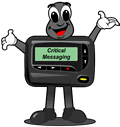















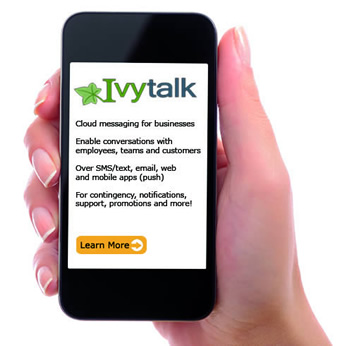
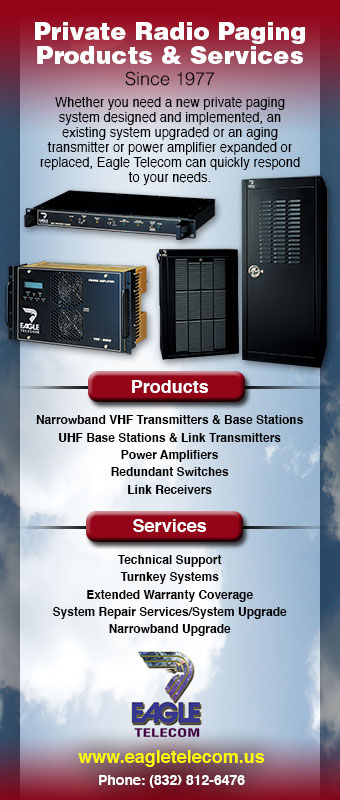

















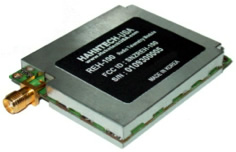

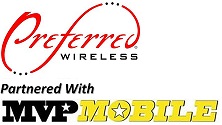






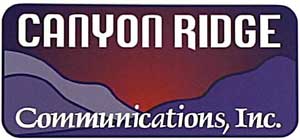





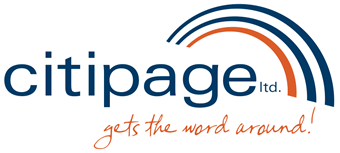





 There will soon be nowhere to hide from Facebook selfies, Justin Bieber news and emails from your boss.
There will soon be nowhere to hide from Facebook selfies, Justin Bieber news and emails from your boss.


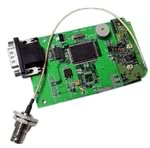


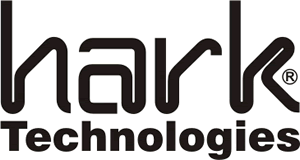
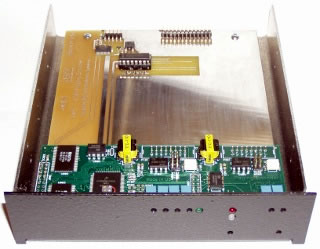

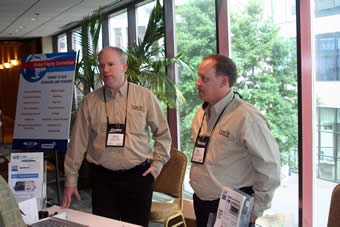 David George and Bill Noyes
David George and Bill Noyes



